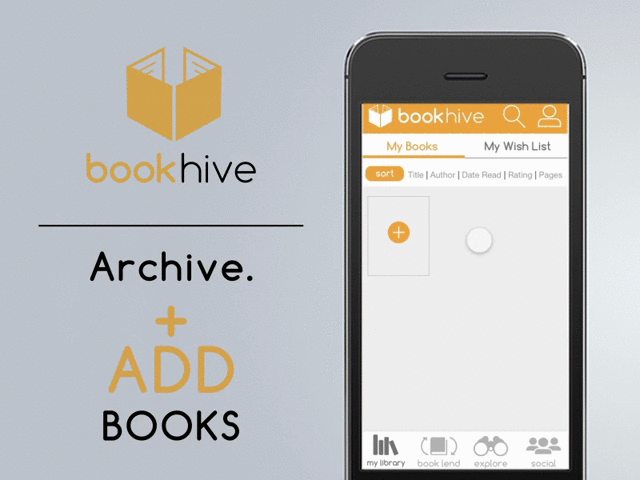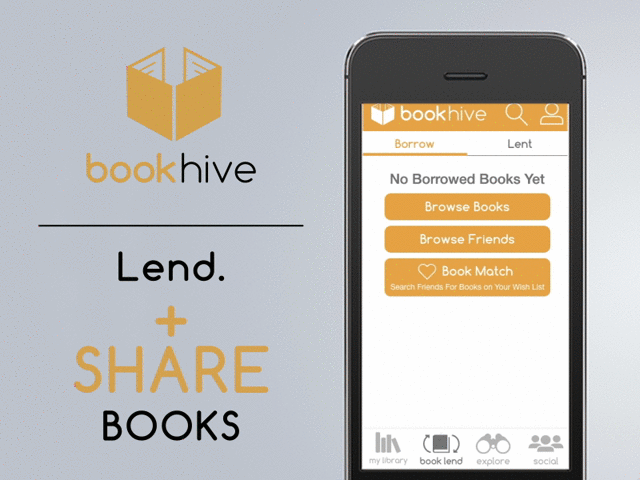
Book Hive UX APP Design
 |  |  |
|---|---|---|
 |  |  |
 |
CORE FUNCTIONS:
Archive books – virtual library of books you own
and a wish list of ones you want to read
Lend books - set up a meet-up with a friend to
trade books
Discuss books – recommend and discuss books with a community of reading friends
Discover Books - find new books from your favourite authors or genres through the search and discover area
This prototype app revolves around a social network concept intended to solve two interrelated problems for two different kinds of users. The first kind of user is the 'avid reader.' This user is a regular reader for whom a reliable source of books is important. The app helps this user by giving them access to a potentially large quantity and variety of books without the high cost that would otherwise be associated with purchasing them. The second kind of user this app targets is the 'beginner reader.' This user is the type that wants to read more. The app helps this user by exposing them to a community of readers with which to share books and reviews, in turn encouraging and motivating them to continue to read. Contingent on fulfilling the needs of both users is connecting with other readers and potential book lenders, thereby expanding one's network or 'bookhive.'
These user personas were created based on interviews, card sorts and general research. The findings were translated into a design strategy for the app, which included the creation of sketches, wireframes and prototypes. The app’s construction was based on an information architecture that took into consideration how its content was to be organized for both usability and discoverability by the two kinds of users described above.
This app was designed with the user’s need first. The design process ensured that the users’ needs were taken into account at every stage. As such, two rounds of user testing was conducted to edit and finesse the app’s design. This helped direct and make the experience of using the app much easier and clearer for the user. The area that had the most improvement based on feedback was the book lending feature. To reflect the feedback, this cornerstone feature of the app, which allows users to choose from up to three possible times, places and dates for a book exchange, was made easier by changing the design flow and user interface. Various other changes based on the user testing were made to improve navigation, design and general ease of use.
